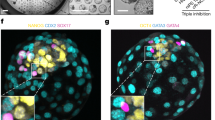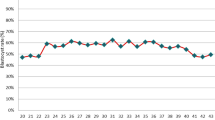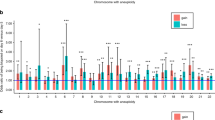Abstract
WE have already described the culture of cleaving human embryos to the sixteen celled stage1, and we now wish to give details of a few embryos that have developed much further, including two that reached fully developed blastocysts. Methods were similar to those described before. Preovulatory oocytes recovered by laparoscopy2 were fertilized in Bavister's medium3, and transferred after 12–15 h into Ham's F 10 supplemented with human or foetal calf serum. Preliminary details of this work have been presented elsewhere4.
This is a preview of subscription content, access via your institution
Access options
Subscribe to this journal
Receive 51 print issues and online access
$199.00 per year
only $3.90 per issue
Buy this article
- Purchase on Springer Link
- Instant access to full article PDF
Prices may be subject to local taxes which are calculated during checkout
Similar content being viewed by others
References
Edwards, R. G., Steptoe, P. C., and Purdy, J. M., Nature, 227, 1307 (1970).
Steptoe, P. C., and Edwards, R. G., Lancet, i, 683 (1970).
Bavister, B. D., J. Reprod. Fert., 18, 544 (1969).
Edwards, R. G., Harold C. Mack Symposium on the Biology of Fertilization and Implantation, Detroit, October 1970 (in the press).
Tarkowski, A. K., Cytogenetics, 5, 394 (1966).
Amoroso, E. C., Memoirs of the Society for Endocrinology, 6, 50 (1959).
Author information
Authors and Affiliations
Rights and permissions
About this article
Cite this article
STEPTOE, P., EDWARDS, R. & PURDY, J. Human Blastocysts grown in Culture. Nature 229, 132–133 (1971). https://doi.org/10.1038/229132a0
Received:
Issue Date:
DOI: https://doi.org/10.1038/229132a0
This article is cited by
-
Oxygen tension in embryo culture: does a shift to 2% O2 in extended culture represent the most physiologic system?
Journal of Assisted Reproduction and Genetics (2017)
-
Nuclease Footprints in Sperm Project Past and Future Chromatin Regulatory Events
Scientific Reports (2016)
-
Making the first decision: lessons from the mouse
Reproductive Medicine and Biology (2015)
Comments
By submitting a comment you agree to abide by our Terms and Community Guidelines. If you find something abusive or that does not comply with our terms or guidelines please flag it as inappropriate.



